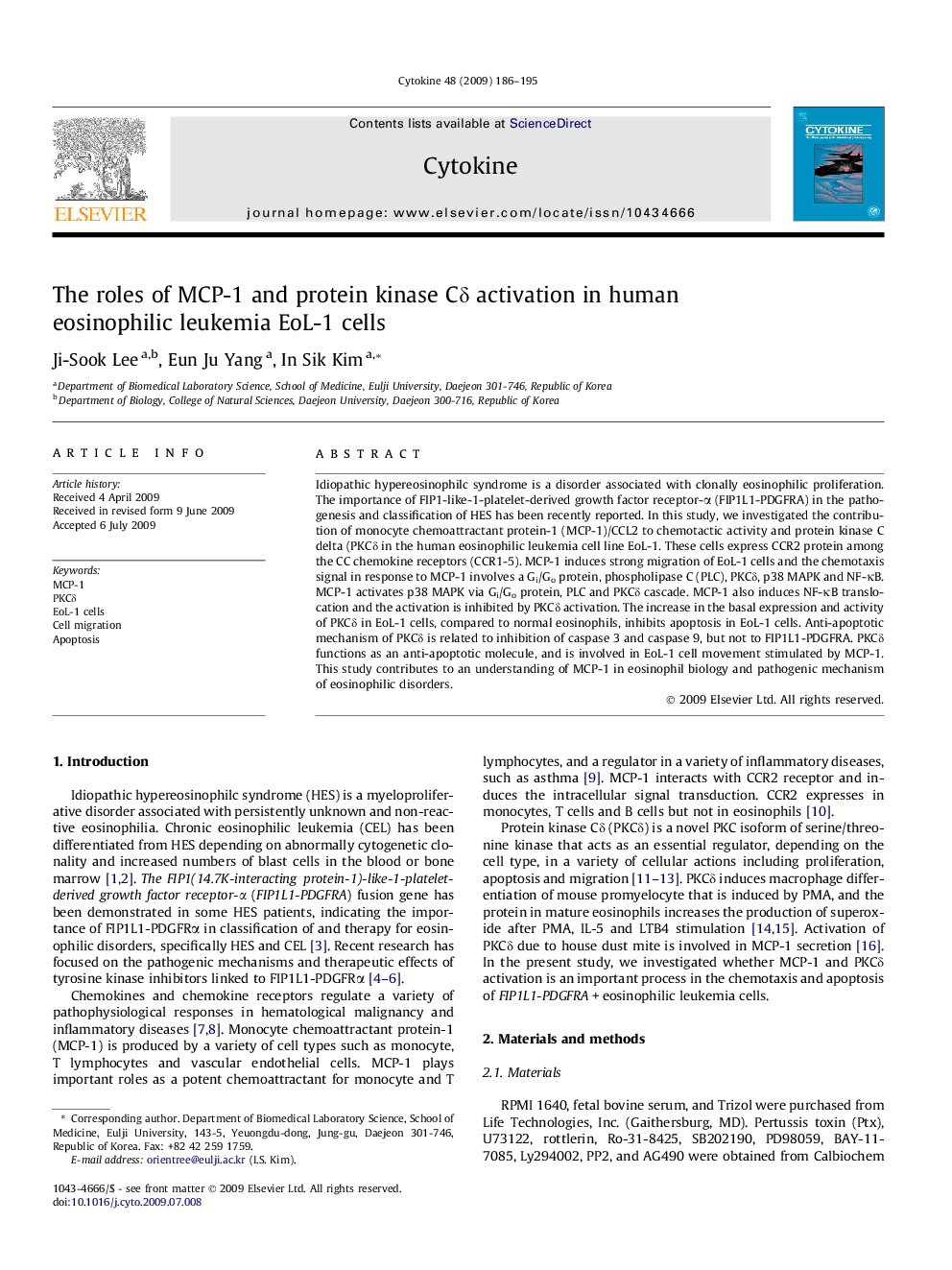| کد مقاله | کد نشریه | سال انتشار | مقاله انگلیسی | نسخه تمام متن |
|---|---|---|---|---|
| 2795139 | 1155313 | 2009 | 10 صفحه PDF | دانلود رایگان |

Idiopathic hypereosinophilc syndrome is a disorder associated with clonally eosinophilic proliferation. The importance of FIP1-like-1-platelet-derived growth factor receptor-α (FIP1L1-PDGFRA) in the pathogenesis and classification of HES has been recently reported. In this study, we investigated the contribution of monocyte chemoattractant protein-1 (MCP-1)/CCL2 to chemotactic activity and protein kinase C delta (PKCδ in the human eosinophilic leukemia cell line EoL-1. These cells express CCR2 protein among the CC chemokine receptors (CCR1-5). MCP-1 induces strong migration of EoL-1 cells and the chemotaxis signal in response to MCP-1 involves a Gi/Go protein, phospholipase C (PLC), PKCδ, p38 MAPK and NF-κB. MCP-1 activates p38 MAPK via Gi/Go protein, PLC and PKCδ cascade. MCP-1 also induces NF-κB translocation and the activation is inhibited by PKCδ activation. The increase in the basal expression and activity of PKCδ in EoL-1 cells, compared to normal eosinophils, inhibits apoptosis in EoL-1 cells. Anti-apoptotic mechanism of PKCδ is related to inhibition of caspase 3 and caspase 9, but not to FIP1L1-PDGFRA. PKCδ functions as an anti-apoptotic molecule, and is involved in EoL-1 cell movement stimulated by MCP-1. This study contributes to an understanding of MCP-1 in eosinophil biology and pathogenic mechanism of eosinophilic disorders.
Journal: Cytokine - Volume 48, Issue 3, December 2009, Pages 186–195